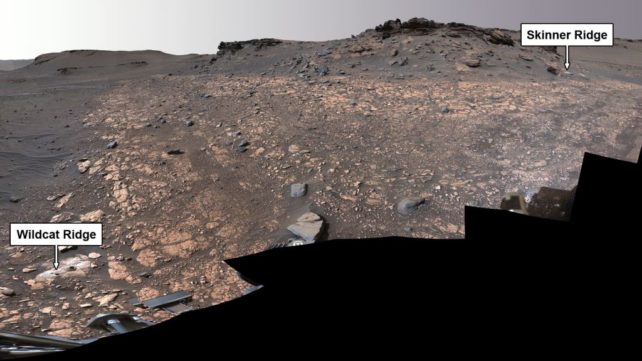According to scientists with NASA's Perseverance Mars rover, the rover has collected samples from an ancient river on the Red Planet.
A future mission will attempt to retrieve the samples and bring them back to Earth for the first time.
Ken Farley, Perseverance project scientist, said during a press conference on Thursday, September 15 that the rocks they have been investigating have the highest concentration of organic matter that they have yet found on the mission.
Rocks deposited in a lake carry organic matter, so this is very interesting.
The rover has collected a total of 12 samples after four samples were collected at the delta. More information about each sample can be found at NASA's website.
The Jezero crater is home to a fan-shaped delta that formed 3.5 billion years ago at the convergence of a river and a lake.
When particles of different sizes settle in the once-watery environment of the delta, Perseverance is investigating the formation of the rocks. The crater's floor was explored by the rover during its first science campaign.
The rover is studying the delta, where it has found organic materials. While organics have been found on Mars before, this is the first time they have been found in an area where life could potentially have existed.
They found a sandstone that carries grains and rock fragments far from Jezero Crater and a mudstone with intriguing organic compounds.

The name "Wildcat Ridge" was given to a rock about 1 meter wide that formed billions of years ago as mud and sand settled in a saltwater lake.
On July 20, the rover abraded some of the surface of Wildcat Ridge in order to use the instrument called SHERLOC to analyze the area.
The samples contain a class of organic molecules that are correlated with sulfate minerals. Sulfate minerals can provide important information about the watery environments in which they formed.
Sulfates and organics were preserved and concentrated in this area when the lake was evaporating. The results are moving because they feel like we are in the right place with the right tools.
NASA said that organic compounds consist of a wide variety of compounds made primarily of carbon. Nitrogen, phosphorus, and sulfur can be found in them.
Some of the chemical building blocks of life are produced by chemical processes that do not need life. Potential biosignatures are substances or structures that could be evidence of past life, but also have been produced without the presence of life.
Thomas Zurbuchen, NASA's associate administrator for science in Washington, said in a press release that the Jezero crater was chosen because they thought it had the best chance of providing scientifically excellent samples.
The Mars Sample Return campaign yielded an amazing diversity of samples.
NASA and the European Space Agency are working together to bring samples of Mars back to Earth. The plan is for a Sample Return Lander to land near or in Jezero Crater, with a small rocket on which the samples collected by Perseverance will be loaded.
Two Ingenuity-like helicopter would be able to retrieve samples on the surface of Mars. Once the sample cache is launched off the Red Planet, another spaceship will take it to Mars and bring it back to Earth.
Did life ever exist on Mars?
This article was published in the past. The original article is worth a read.